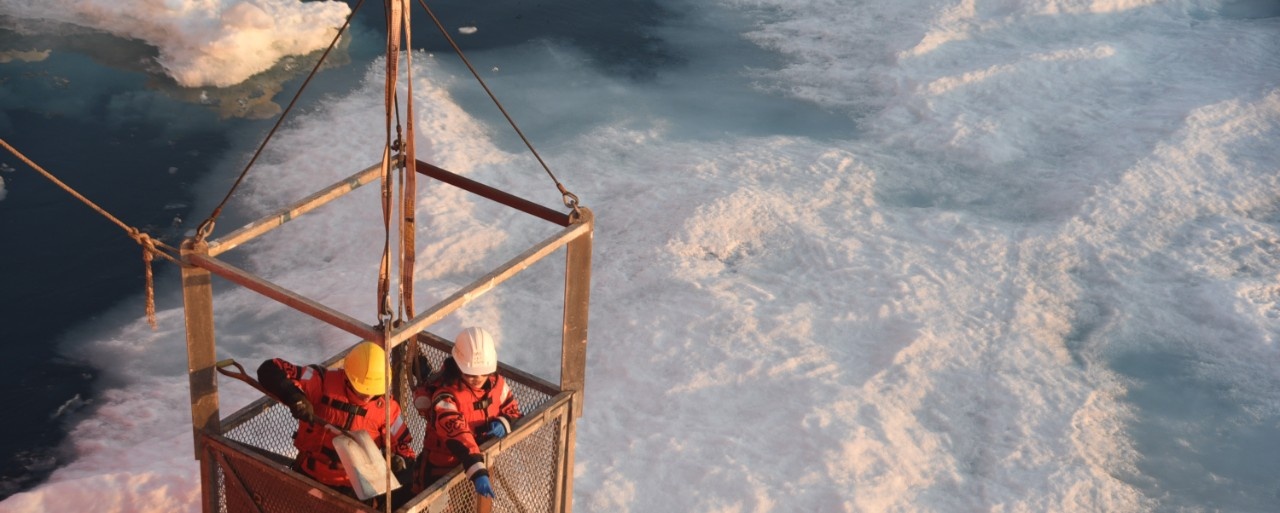EES PhD Research Seminar - Lauren MacLellan
Lauren MacLellan
Ph.D. Candidate
Department of Earth and Environmental Sciences
Dalhousie University
Title: Novel Surface Process Applications of Muon-Produced Terrestrial Cosmogenic Nuclides
Abstract: Terrestrial cosmogenic nuclides (TCNs) are produced in situ in Earth’s crust by the secondary cosmic ray flux – primarily nucleons and muons – generated in the atmosphere. Measuring TCN concentrations and characterizing their production rates have enabled methods for exposure and burial dating of rock and sediment (spanning from thousands to millions of years) as well as erosion rate estimation. However, the application of TCN methods has largely been restricted to the upper 5 m of Earth’s surface owing the complexities of production by deeply penetrating muons. Recent advancements in TCN extraction methods, accelerator mass spectrometry (AMS) for detecting lower concentrations, and the knowledge of governing physics now allow for the broader and more routine application of muon-produced TCNs. This research builds on these advancements through three interlinked projects that apply muon-produced TCNs, addressing previously elusive surface process questions in Late Cenozoic geology.
The first project, vertical muon paleotopometry, uses the vertical pattern of muon-produced TCN concentrations to resolve erosion history. Discrepancies between measured concentrations – accumulated in rock over millions of years – and those computed using modern sample depths by physics-informed codes (MUTE and GEANT4) reveal changes in shielding. The proof-of-concept study in Sudbury, Ontario, is analyzing granophyre core samples ranging from the surface to 1000 m depth. The site selection of Sudbury enables the external verification of MUTE’s computation against measured muon flux data from SNOLAB, Canada’s 2-km-deep particle physics lab. We hypothesize that (1) the computed muon-produced concentrations will be underestimated due to reduced shielding from fluvial and glacial erosion and (2) mean erosion rates derived from 26Al and 36Cl for the glacially influenced past ~4 Myr will be faster than the ~8 Myr erosion rate recorded by 10Be.
The second project shows how in situ 14C can be used to improve 26Al/10Be burial ages of sediment formed from rapidly eroding catchments. In such environments, the assumption in burial dating that sediment has been fully shielded from cosmic rays since burial is problematic. While post-burial production is typically negligible, fast erosion results in low initial ²⁶Al and ¹⁰Be concentrations, making post-burial contributions a significant fraction of the total measured values. If unaccounted for, this leads to underestimated burial ages. To correct for this effect, we propose a new approach that monitors muon and nucleon flux to a sample and subtracts post-burial production using in situ ¹⁴C. Due to its short half-life (5,730 years), any measured ¹⁴C must have formed after burial, making it an ideal tracer. We are currently trialing this method on the Pliocene Beaufort Formation in the Canadian High Arctic, where previous burial dating attempts yielded 26Al and 10Be magnitudes lower than many regions on Earth, suggesting high paleo-erosion rates.
The third project focuses on optimizing Dalhousie’s new ¹⁴C extraction line to enable the measurement of low in situ ¹⁴C concentrations from muons. The induction furnace, elimination of carbon-bearing vacuum seals, ultra-high vacuum conditions, and full automation are expected to reduce the line’s blank by nearly an order of magnitude, making it comparable to other state-of-the-art systems while enabling faster extractions
Biography: Lauren completed her Bachelor of Science with Honors (B.Sc. H) in Earth Sciences at Carleton University in 2022. During her undergraduate degree she collaborated with the International Venus Research Group (IVRG) under the supervision of Dr. Richard Ernst, where she developed high-resolution maps of complex lava flow systems on the surface of Venus using Magellan Synthetic Aperture Radar (SAR) imagery. This mapping provided insights into Venus' plumbing system, erosion history and structure formation, and provided a complementary view to Large Igneous Provinces (LIPs) on Earth. For her honors thesis, Lauren worked with Dr. Fred Gaidies in the x-ray micro-computed tomography laboratory at Carleton University. She analyzed garnet porphyroblast microstructures, focusing on textural and chemical sector zoning, to gain insights into crystal formation processes at the atomic scale. Through these experiences, Lauren developed a passion for high precision analytical geochemistry and research that couples spatial and geochemical data. In 2022, Lauren began her PhD at Dalhousie University in Earth and Environmental Sciences, where her research now focuses on using terrestrial cosmogenic nuclides produced by muons 10s to 100s of metres deep to answer surface process questions.
Time
Location
Milligan Room, 8th Floor Biology-Earth Sciences Wing, Life Sciences Centre, Dalhousie University
To join virtually:
Teams Link: https://teams.microsoft.com/l/meetup-join/19%3ameeting_NjhhMzhlZWItODEwZC00MzU1LTlmYTAtYThiMTNhYTQxMmRl%40thread.v2/0?context=%7b%22Tid%22%3a%2260b81999-0b7f-412d-92a3-e17d8ae9e3e0%22%2c%22Oid%22%3a%22d370b714-9cd1-4a26-a87a-2be5c6b6f8d7%22%7d
